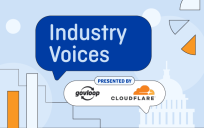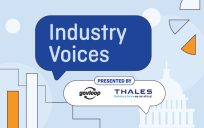The pandemic has changed us. Specifically, it has changed the language we use to describe the world around us. A “new normal” and “the next normal” are now recurring themes of everyday conversation. “Zoom-bombing” is actually a real-world problem, not some move in a video game. “Social distancing” is on the tips of everyone’s masked tongues. Speaking of masks, sadly everyone knows what an N95 mask is. Likewise, “doom-scrolling” is also making its rounds across the internet one swipe at a time. But perhaps nothing is as overhyped as “remote work.”
 The pandemic forced many white-collar jobs out of offices and into basements, kitchens and bedrooms. But as the pandemic has evolved, numerous tech firms have decided to fully embrace having their employees work from home – some of them permanently – even after the risks associated with COVID-19 are diminished. What is still not clear is whether forever remote work is more dangerous than it is beneficial. We simply haven’t run the experiment at scale for long enough. Without this insight, there actually may be “a lot to lose.”
The pandemic forced many white-collar jobs out of offices and into basements, kitchens and bedrooms. But as the pandemic has evolved, numerous tech firms have decided to fully embrace having their employees work from home – some of them permanently – even after the risks associated with COVID-19 are diminished. What is still not clear is whether forever remote work is more dangerous than it is beneficial. We simply haven’t run the experiment at scale for long enough. Without this insight, there actually may be “a lot to lose.”
Weighing Benefits and Costs
To be clear, there are numerous undeniable and quantifiable benefits to remote work – benefits for both employees and employers. The elimination of commuting can reduce stress. The ability to literally roll out of bed and to one’s “workplace” saves a lot of potentially non-productive time (and possibly showering). Some staff, free from the bother of their colleagues, can focus and become more productive.
Similarly, with all their staff working from home, employers need not invest in world-class office space. The infamous perks, often wrongly, associated with attracting and retaining millennial talent (e.g., onsite masseuses, coffee bars, dry cleaning, yoga classes, subsidized meals, etc.) may be redeployed.
Organizations can also recruit from a much larger pool of candidates. They are unrestrained by geography. This will accelerate the time to hire and potentially improve the quality of talent.
Remote work seems like an outright winner, right? Well, maybe. While many firms have been working remote for several years, executing at scale is new for most of us.
Let’s take a quick timeout and dig in. The remote work hype train is picking up a little too much momentum. Instead of knee-jerk defaulting to forever remote work because it is trending and appears to benefit all involved, organizations should approach forever remote work with eyes wide open.
Organizations of all types should look beyond the first-order impacts of this type of policy change. They need to consider the second- and third-order ones as well. Permanent remote work is a one-way door (see my prior post on this topic). After all, once the remote work genie is let out of the bottle.
The Drug Development Analog
As we assess the roll-out of permanent remote work, we can use the clinical drug trial approach as a possible analog (see my prior post on Analogical Thinking). Despite demand, one cannot simply bring a new medical treatment to market overnight. All drugs that are available for public consumption go through clinical trials. These trials systematically and thoroughly assess the efficacy and downsides of any new pharmaceutical.
Typically, clinical trials are conducted in phases. Each phase is designed to answer specific questions while also ensuring that those taking part in the trial are not harmed. Safety and precaution are paramount.
Most drugs go through three phases.
- Phase I involves a very small number of participants, either those who are healthy and not facing any illness or those who are very sick – essentially, opposite ends of the health spectrum. During this phase, researchers monitor any unintended side effects carefully. Tolerability and reactions to ingestion or consumption are key.
- Phase II expands upon the pool of participants. Up to 300 patients may participate. The dosage of a drug is often varied during this phase to assess the impact of treatment levels. This helps manufacturers determine the optimal dosing regimen based on efficacy and downside.
- Phase III enlists large groups of up to 3,000 or more – a broad, diverse audience. Here, the drug in question is often compared to alternative treatments and potentially placebos. The drug is also tested in conjunction with other treatments to determine interactive effects and longer-term implications.
The work location implications of COVID-19 will stay with us far after the pandemic has passed. Now is the time to be thoughtful of what it means for staff, for employers, and for the future of work. In Part 2 of this post, we will explore a potential three-phase model that those organizations seeking to roll out permanent remote work should consider.
Wagish Bhartiya is a GovLoop Featured Contributor. He is a Senior Director at REI Systems where he leads the company’s Software-as-a-Service Business Unit. He created and is responsible for leading a team of more than 100 staff focused on applying software technologies to improve how government operates. Wagish leads a broad-based team that includes product development, R&D, project delivery, and customer success across state, local, federal, and international government customers. Wagish is a regular contributor to a number of government-centric publications and has been on numerous government IT-related television programs including The Bridge which airs on WJLA-Channel 7. You can read his posts here.





Leave a Reply
You must be logged in to post a comment.